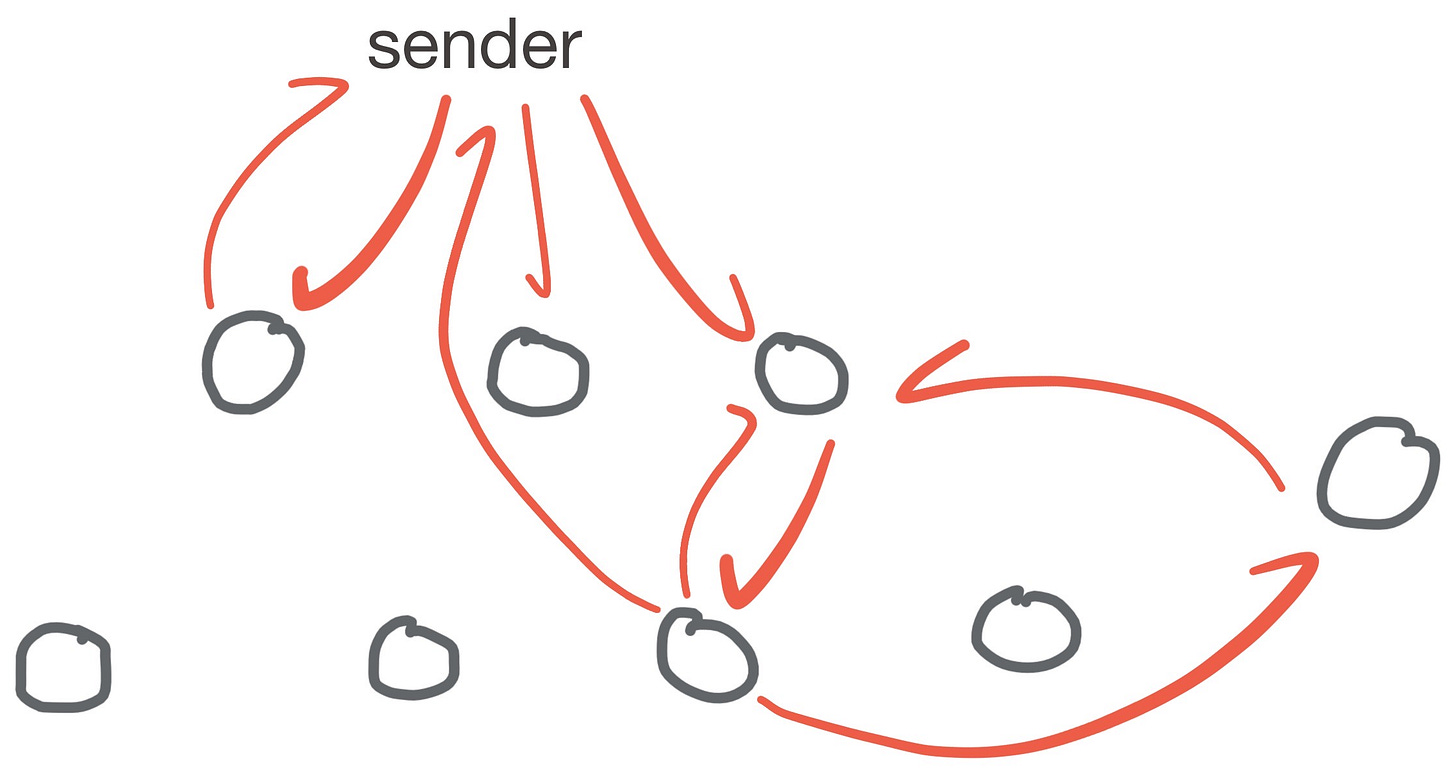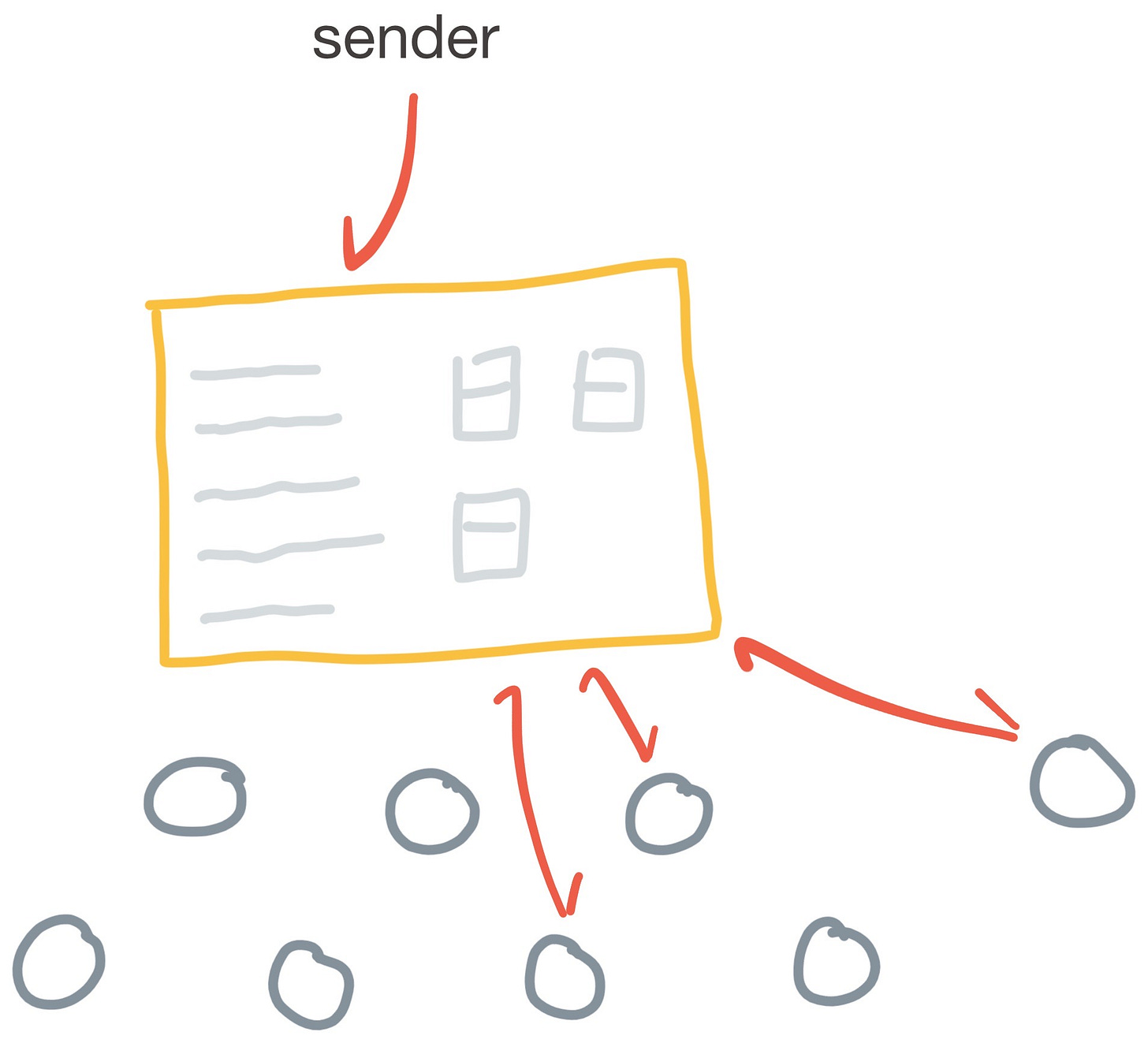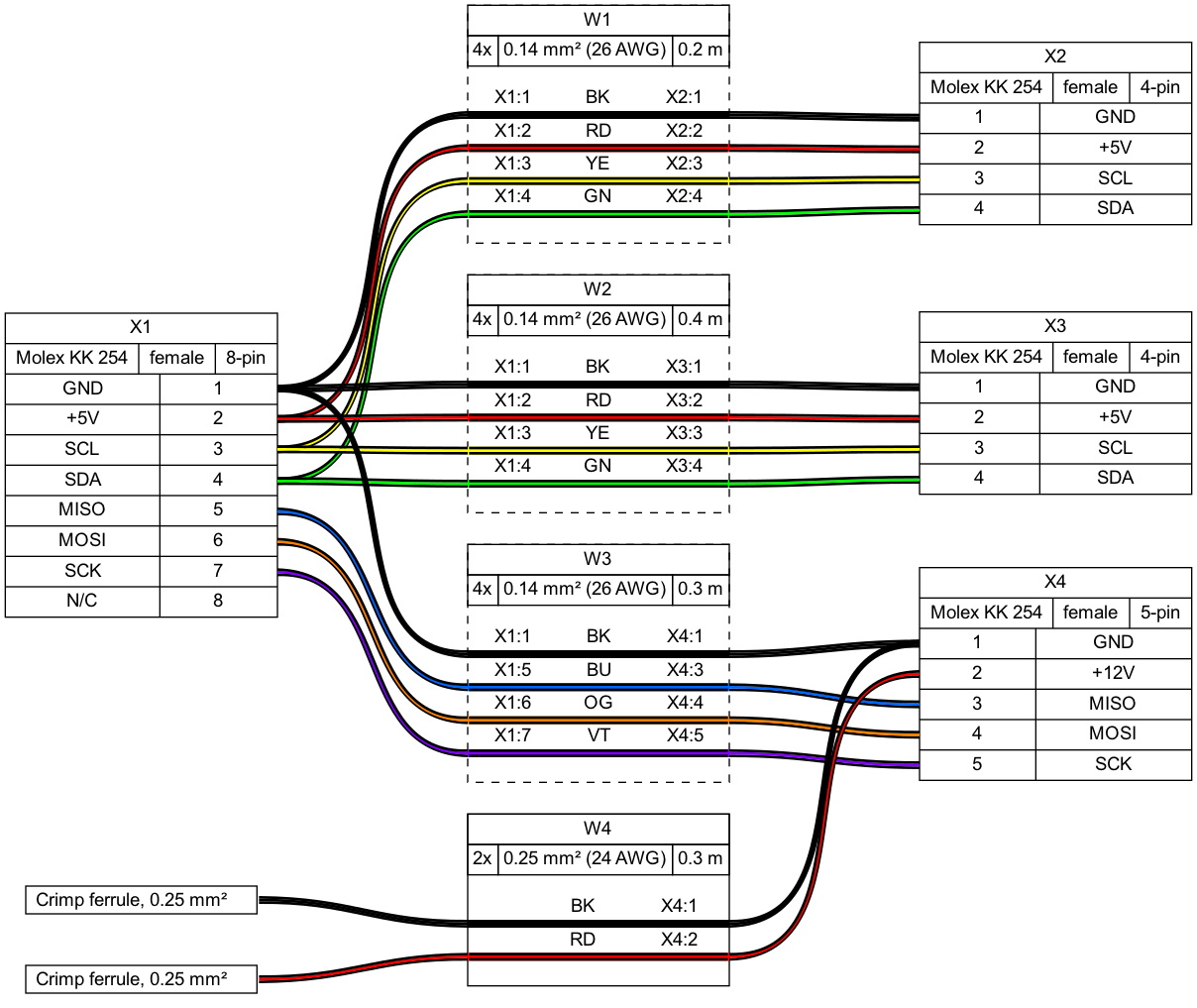Introducing the Pull Communication Model
Why communication is a HUGE time and energy waste in companies, and how to think about fixing it.
A key aspect of making great decisions is having access to the information required to make those decisions.
There are many reasons we don't have the information we need. Maybe it doesn't exist, or maybe we don't have access to it when we need it. More likely we can’t find it. Maybe it is too many steps away, buried in links and articles, or spread out among various coworkers experiences and learnings. Perhaps it is hidden in a manual that was never digitized. Perhaps there is so much information being sent out at all times it is nearly impossible to capture, parse, and assemble it in time. While sometimes it doesn’t exist, nowadays, not having information is usually a result of not knowing where to look, or not being able to find it when you do. And when you can't find what you need in order to make great decisions, you lower the chances of great outcomes.
So how do you create an operational operating system for your business that continually has the right amount of information, at the right time, available to the right people?
One giant step is rethinking the way you communicate with those you work with.
Current State
Consider the current state. When you need something, you send an email to request it, internally or externally. When you aren't sure who will make the decision, or multiple people have weigh-in, you CC. Perhaps you even blind CC in order to let others know you are working on a solution or to inform them of what you sent. There are meetings to decide direction, calls to bring in external stakeholders or those who are remotely situated. The direction, type, and people involved is constantly changing, expanding, and shifting.
Beyond communication there usually lies a fragmented style of data collection and storage. If you are working on complex files you probably store them locally. You might email yourself the file to work on at home. You might use file sharing with other coworkers to collaborate on documents.
Then there are SaaS products and tools that help manage various verticals like sales, problem-solving, order management, and inventory. These often communicate through notifications, texts, and some have daily or weekly reports hitting our emails.
However, none of this is enough. There are still many times during a week where you cannot find what you need in order to make a decision or complete a task. So you ping someone, walk to their office, send an email, or, in some other way, interrupt their day so you can complete yours.
As you can tell, we are constantly communicating information. Most of this communication is not progressing the vision, completing a task, or adding value... its simply transferring knowledge or data from one point to another. At its worst, it is distracting or disrupting others from completing their own work.
Therein lies the first key to streamlining operations and rethinking your communication strategy:
You want to minimize the knowledge transfer needed to run your operations.
You can do this by democratizing access, combining data creation with distribution, and by changing how data is stored. But more on that later.
The Problems Associated with the Current State
The method of communication described above, the one that grows organically if not purposefully created, is one of waste and harmful repercussions.
When you send an email to multiple people, there are always some who instantly archive this email (and all messages to follow on that thread). This has productivity reducing effects on all involved. This communication line is wasted and harmful.
Let's walk through a complex yet common email story...

Level 1
I email 3 people an idea I have about next quarter’s operational metrics. These three people all have valuable input, so I want to get their ideas and buy-in. The marginal cost to adding people is so low that I decide to add my manager so they know what I am working on, and my operational equal in another lateral product department since we were discussing this at lunch yesterday.
I have already created some wasted communication since my boss will find out what I am working on when and if it works. My operational coworker has already discussed this with me and really doesn't need to know that I am executing on it along with every detail of my email and subsequent follow-ups.
Level 2
One of the people I emailed then forwards the email to the shop floor manager to ask them a few questions so that they can give me some metrics behind their input. When the shop floor manager responds, he responds to me and the person who forwarded it. Again the marginal cost of adding a person is so low, that he also adds in his production manager to make sure the numbers are right... and more just to let him know what is going on with management.
Now the complexity starts. The other two people that I originally emailed are now out of the chain and will not be updated on subsequent emails with this particular chain. This also might be occurring with the other lines of communication, so now my inbox and messaging is getting more complex with multiple lines of communication along the same topic.
As this continues, people get caught on replies long after they need to (or want to be part of the conversation). Subsequent updates often don't propagate back to the key people. This in turn requires people involved to read through threads, re-ask key questions, and search for what is needed. All of this because the message is being sent through a push system with a low marginal cost of adding additional people.
The Pull Communication Model
The basis for better communication, reducing errors and mistakes, increasing the availability of information when and where needed, and reducing the search and rework load on workers is what I call the Pull Communication Model.
The idea is simple. Rather than pushing information out, you designate specific areas for specific types of information and communication and "upload" everything there. Then, others who need or want that data can "pull" it when, where, and if needed.
In this way, every pull is because the data is wanted, rather than being pushed into their space - wanted or unwanted. This fixes a number of the issues associated with push-style communication.

This model actually expands the level availability (technically the entire company can see, monitor, take part without any person being forced into the conversation. This results in maximum access, minimum waste, and if done right, almost no knowledge transfer.
Since all updates are uploaded to the same area, people that join the conversation later have all the same updates and information as those who have been there since the beginning; all without needed to request updates or summaries on what was missed.
In this case, the transfer of knowledge (or communication) is reduced to only that which is needed. It is called on only when and where the situation requires it, and the wasteful lines are non-existent.
This also is the basis for something I will cover at a later date, asynchronous communication - a key aspect to a scalable operations operating system. Because the conversation is happening in a “space” rather than a communication line (where the next action must be a response), the conversation can occur at different times for different people when they are available and ready. With the pull model, there is no subsequent action required. You can use the space to monitor progress, move the conversation, or acquire detail. It is up to you the receiver, not the sender.
Over the next few weeks I am going to further outline ways you can build a world-class global company based on this idea, as well as tools you can use, and some of the many benefits that arise from doing so.
📖 Must Reads
Mexico looks to benefit most from the current trend in near sourcing - Reuters
How a billionaire keeps his calendar free, controls his own time, and stay productive throughout the day - Medium (pair this with BCG’s latest release on meetings and emails)
A great look at how long-haul trucking works, and an understanding at the cost drivers associated with it - Youtube (Wendover Productions)
🔎 Interesting Finds
The Latticework - I have been following @blasmoros for about a year now. He does excellent deep dives on books and concepts and shares them on his site, The Rabbit Hole. He is now putting together a full deep dive on every major mental model and first principle and the initial release looks amazing. If you look at one thing this month, look at the Latticework.
The Most Interesting Man Alive - On the idea of mental models, George Mack shared the top five models Josh Waitzkin uses for incredible abilities.
WireViz - tool for using code to create wire diagrams. Great for hackers, builders, and floor managers.

🕹Getting Technical
On Device Product Recognition - There is no debate, computer vision is part of the future of supply-chain. From automating VMI programs to enhancing picking and placement, to creating autonomous vehicles for delivery, computer vision will play a key role. Google recently released some work on real-time product recognition. I can see this being used in large SKU warehouses and VMI or consignment supermarkets in client facilities real soon.
Autonomous Pallet Jack Moving - A neat look into where warehouse logistics are headed, and the automation of transfer points for supply-chain.
Thank you for reading!
If you have thoughts or feedback, I would love to hear from you! I am always looking to meet new people in the space.
Reach out to me on Twitter.
I think-up, write, and build systems and technologies that help B2B businesses augment and automate their decisions (with a special bent toward supply chain and manufacturing 😉)



If I understand what you're getting at, it'd kinda be like a wiki that is kept up to date? That way people can come look at when they need the information?
Seems like some context can get lost as you update it. So perhaps it's a log of updates?
I'm trying to think of a concrete example of how I'd use the Pull Communication model. Perhaps I could have a page that anyone in the company can go-to at anytime and see what our current marketing strategy is? I could see that as a way to avoid regular updates from an all-hands meetings. I also see how it'd be beneficial to have a the most update to date strategy incase someone is assigned a marketing task and needs some more context.
Is that example close?
Feels like I'm missing something still.